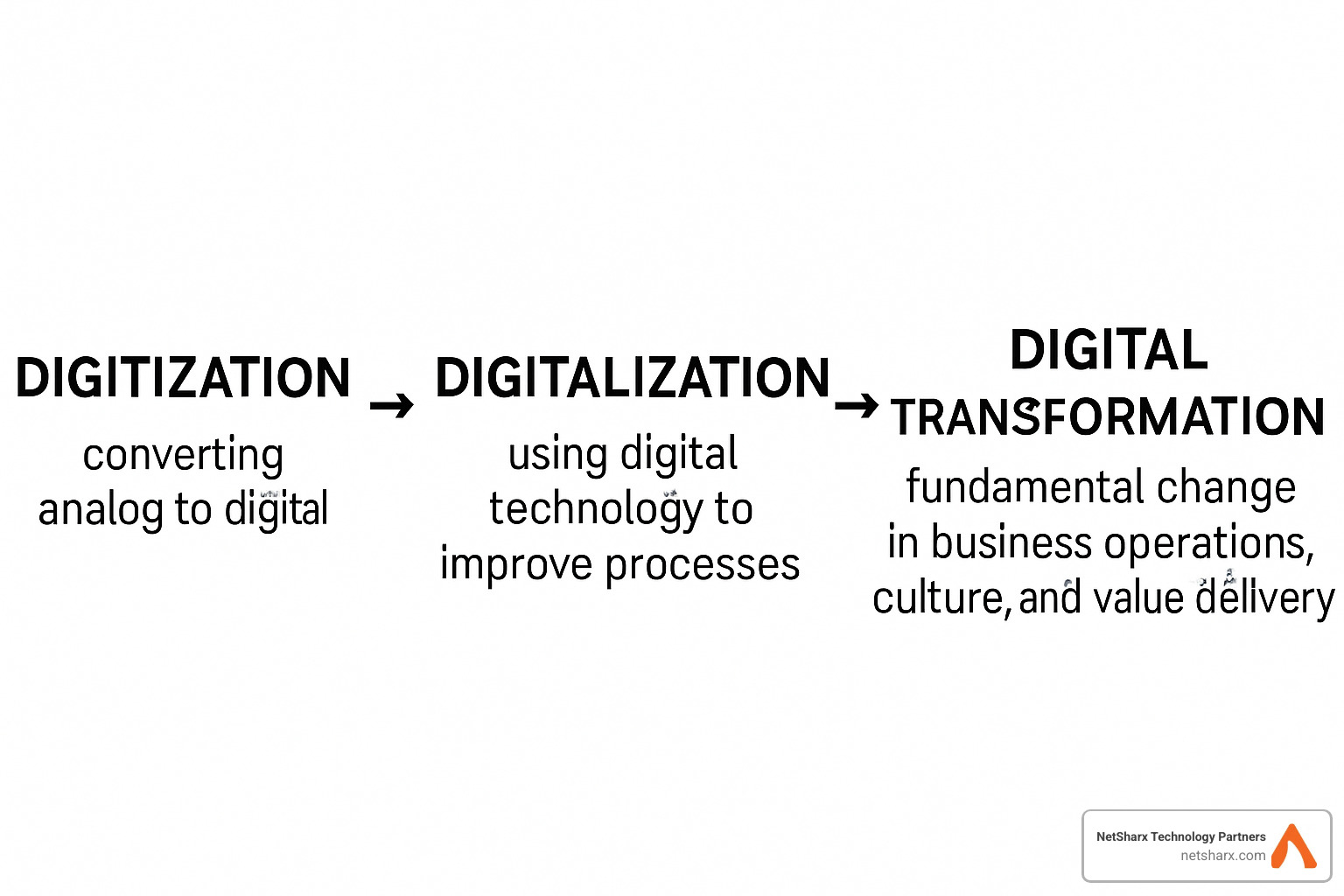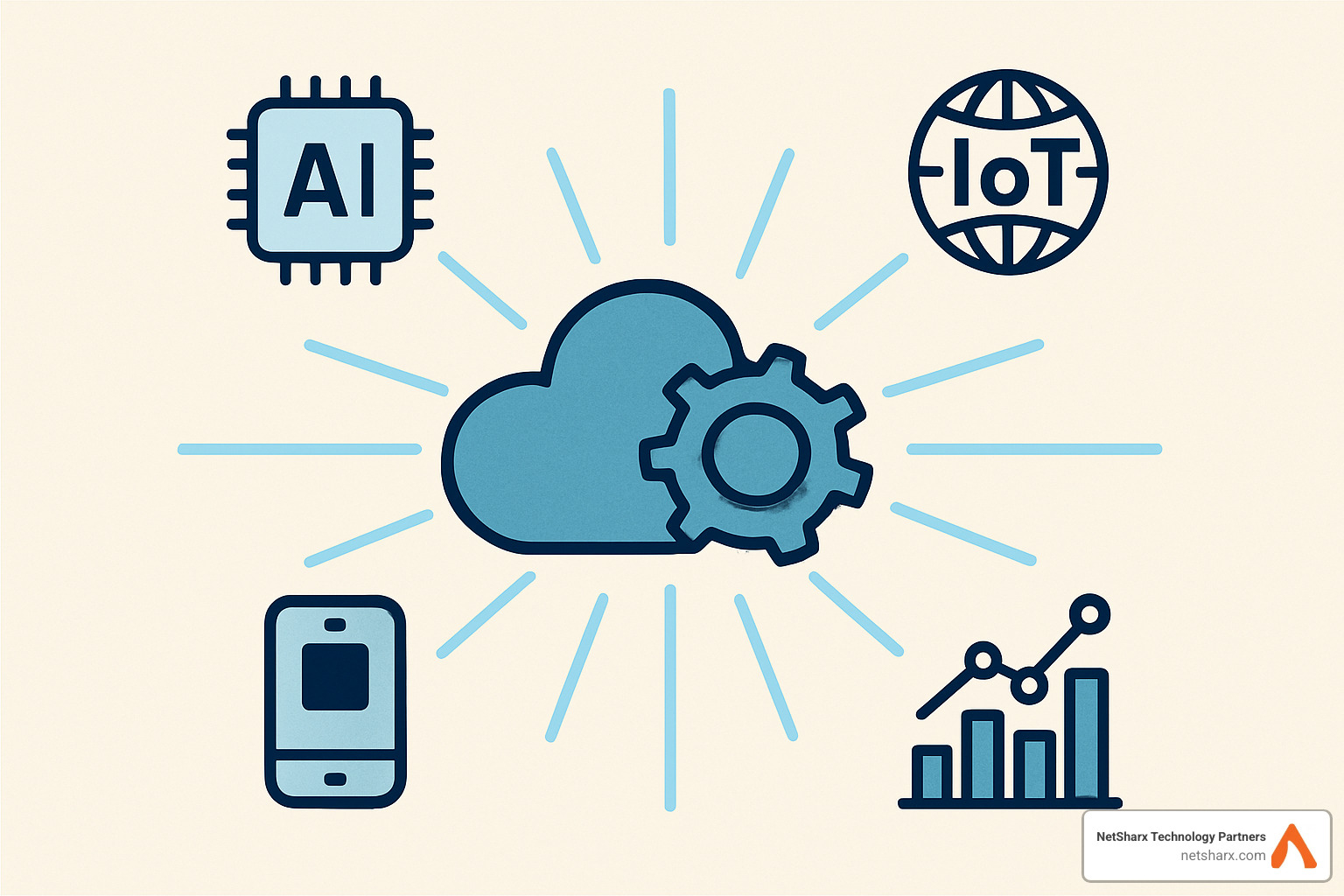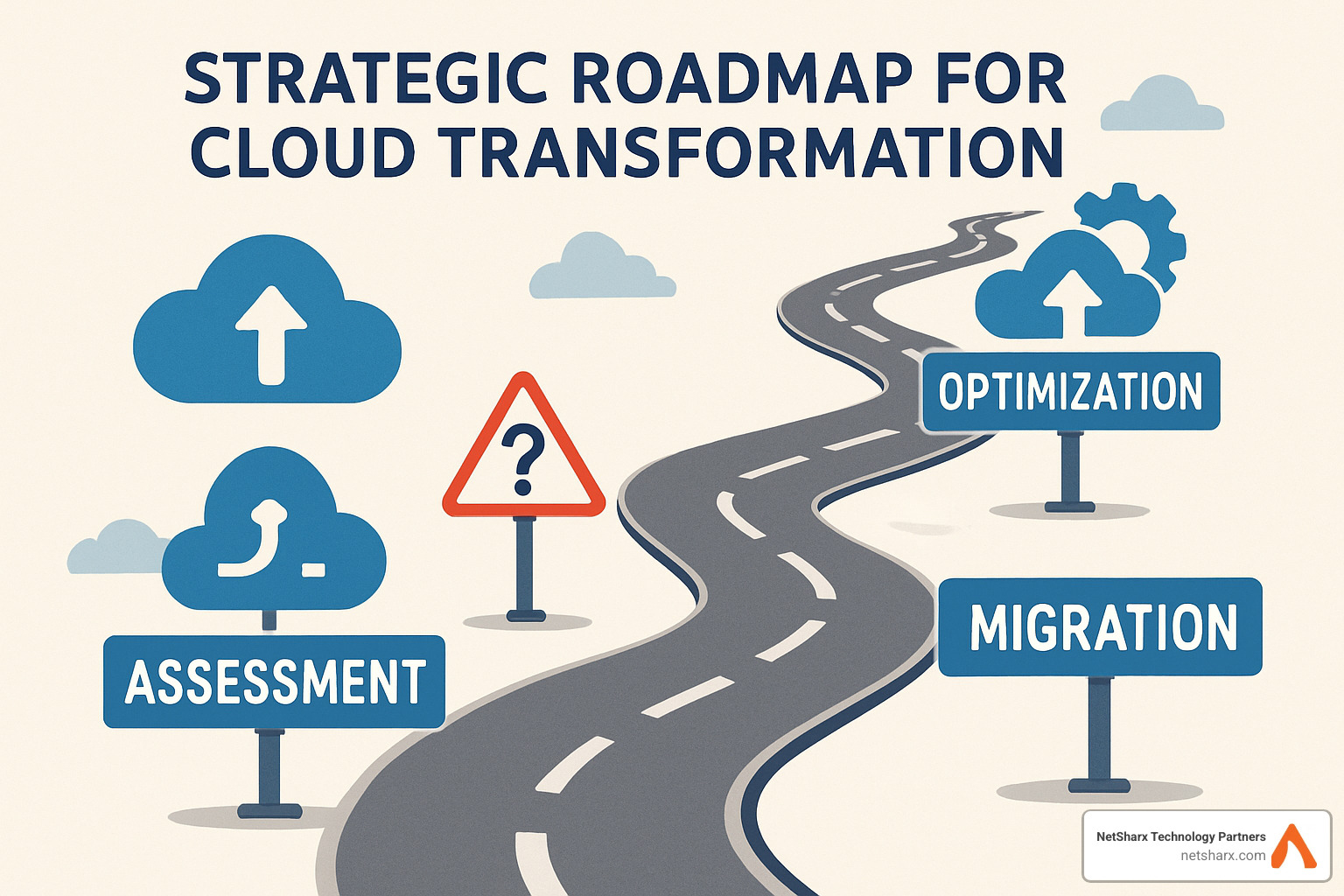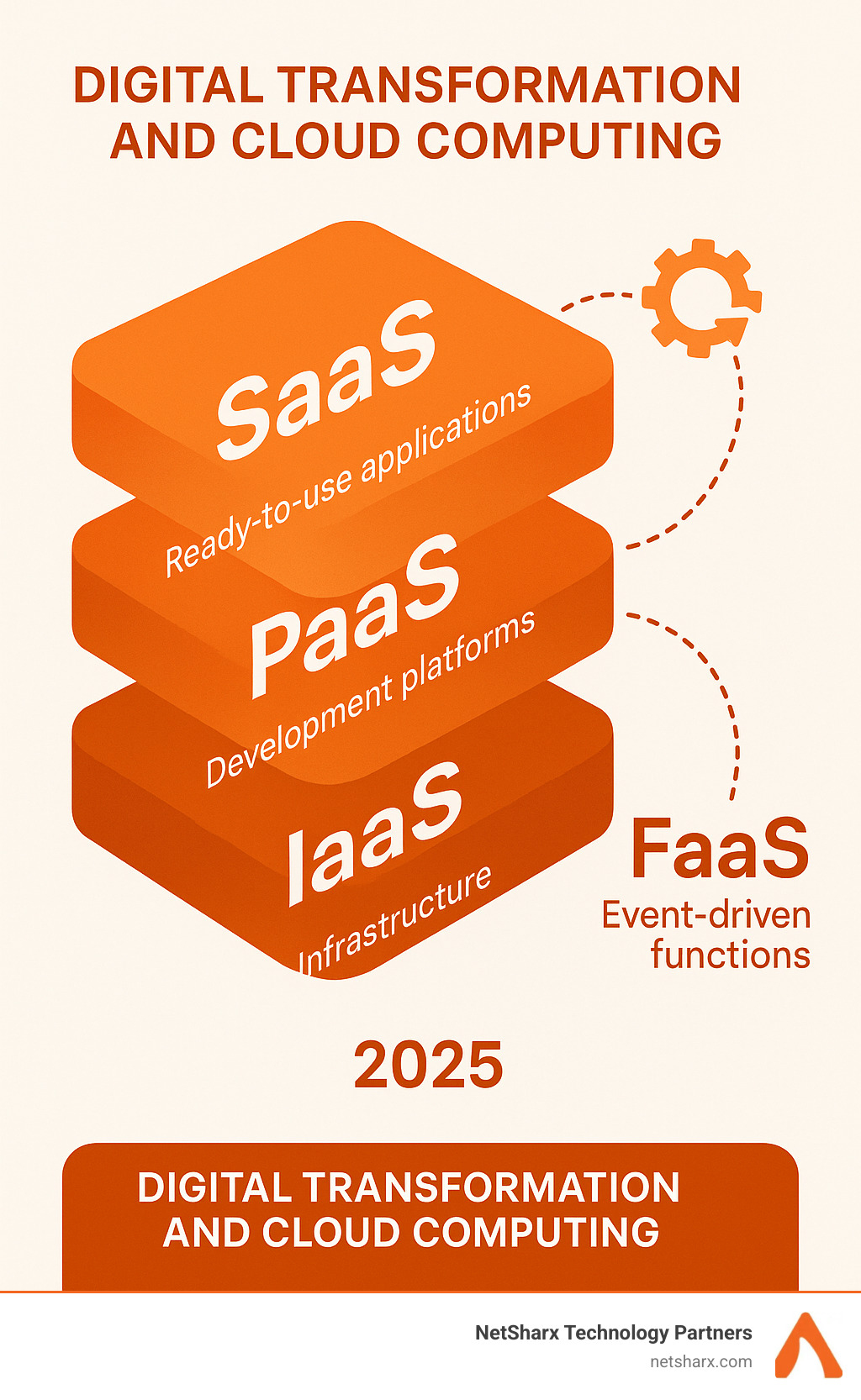Digital Transformation and Cloud Computing: 8 Game-Changers
Why Digital Change and Cloud Computing Are Reshaping Business Forever
Digital change and cloud computing are no longer buzzwords—they’re the twin engines of modern competitiveness. According to Harvard Business Review, digital leaders delivered 65% higher shareholder returns between 2018 and 2022. What most decision-makers miss is that cloud computing supplies the agility, scalability, and pay-as-you-go economics that make ambitious change feasible—and affordable.
The statistics paint a compelling picture: by 2025, Gartner predicts that 85% of enterprises will accept a cloud-first principle, and organizations that fully accept digital change are 23% more profitable than their peers. Yet despite these promising numbers, many businesses struggle to connect the dots between cloud adoption and meaningful business change.
The challenge isn’t technical—it’s strategic. Too many organizations view cloud migration as an IT project rather than a business change catalyst. They lift-and-shift applications without reimagining processes, missing the opportunity to fundamentally reshape how they create and deliver value.
Key cloud advantages at a glance:
- Agility – Launch or retire applications in minutes
- Cost Efficiency – Shift from capex to predictable opex
- Innovation – On-demand AI, ML, and analytics
- Scalability – Auto-adjust resources for peaks or growth
- Security – 94% of adopters report stronger protection than on-prem
- Collaboration – Work securely from anywhere
- Global Reach – Deploy services worldwide in minutes
- Disaster Recovery – Built-in redundancy and backup capabilities
- Environmental Impact – Shared resources reduce carbon footprint
- Compliance – Automated governance and audit trails
I’m Ryan Carter, CEO of NetSharx Technology Partners in Minneapolis. Our vendor-agnostic engineering team has guided hundreds of mid-market CIOs through successful digital change. The pattern is clear—organizations that treat cloud as the foundation of change accelerate results and outpace rivals.
What sets successful changes apart is the recognition that digital change and cloud computing create a multiplier effect. Cloud doesn’t just reduce costs—it enables entirely new business models. It doesn’t just improve efficiency—it open ups innovation capabilities that were previously accessible only to tech giants.
What Are Digital Change and Cloud Computing?
The Essence of Digital Change
Digitization turns paper into PDFs. Digitalization wires those PDFs into simple workflows. Digital change reimagines the entire value chain—eliminating the PDF altogether by redesigning products, processes, and even revenue models.
Netflix offers the textbook example: from mailing DVDs (digitization) to streaming (digitalization) to producing its own content and predictive recommendation engines (digital change). Each leap relied on cloud capacity Netflix didn’t own.
The evolution from digitization to digital change represents a fundamental shift in thinking. Where digitization focuses on efficiency and digitalization emphasizes optimization, digital change demands reimagination. It’s the difference between making existing processes faster versus questioning whether those processes should exist at all.
Consider how Uber didn’t just digitize taxi dispatch—it eliminated the need for taxi ownership entirely. Amazon didn’t just move bookstores online—it created an entirely new retail ecosystem. These companies succeeded because they understood that digital change isn’t about technology; it’s about leveraging technology to create new forms of value.
True change touches four pillars:
- Business model – products to services, ownership to subscription.
- Operations – automated, data-driven workflows replace manual handoffs.
- Culture – teams experiment rapidly and learn from data.
- Customer experience – journeys become personalized and continuous.
Each pillar reinforces the others. New business models require operational agility. Cultural change enables customer-centric innovation. And customer insights drive business model evolution. This interconnectedness is why piecemeal approaches to digital change often fail.
By 2019, 70% of firms had a digital strategy, but many stalled because they treated it as isolated IT projects rather than enterprise redesign. The organizations that succeeded understood that digital change is fundamentally about organizational change—with technology as the enabler, not the end goal.
Understanding Cloud Computing Fundamentals
Think owning a fleet of cars (on-prem) versus ride-share (cloud). With cloud computing, providers deliver servers, storage, databases, analytics, and AI over the internet and bill only for what you use.
But this analogy only scratches the surface. Cloud computing represents a fundamental shift from scarcity-based to abundance-based thinking. In the traditional IT model, resources were finite and expensive. Planning required predicting future needs months or years in advance. Mistakes were costly and long-lasting.
Cloud computing flips this model entirely. Resources become virtually unlimited and instantly available. Planning shifts from prediction to experimentation. Mistakes become learning opportunities rather than sunk costs.
Five attributes set cloud apart:
- On-demand self-service – Provision resources without human intervention
- Broad network access – Available over standard networks from any device
- Resource pooling – Multi-tenant model with location independence
- Rapid elasticity – Scale up or down automatically based on demand
- Measured service – Pay only for what you consume with transparent monitoring
These characteristics combine to create something greater than the sum of their parts: the ability to treat IT infrastructure as a variable cost that scales with business value rather than a fixed cost that constrains business growth.
Deployment choices:
- Public cloud – shared, scalable, cost-efficient.
- Private cloud – dedicated for compliance or latency needs.
- Hybrid cloud – best of both, often the sweet spot for mid-market firms.
- Multi-cloud – leveraging multiple providers for redundancy and best-of-breed services.
The choice between deployment models isn’t just technical—it’s strategic. Public cloud maximizes agility and cost efficiency. Private cloud provides control and compliance. Hybrid cloud balances both while enabling gradual change. Multi-cloud prevents vendor lock-in while optimizing for specific workloads.
Virtualization plus global data centers erase the capital barriers that once kept cutting-edge tech out of reach. That’s why digital change and cloud computing are inseparable—the latter is the enabler of the former. Without cloud’s economic model, most organizations couldn’t afford to experiment with AI, machine learning, or advanced analytics. With cloud, these capabilities become accessible to businesses of any size.
The Symbiotic Relationship: How Digital Change and Cloud Computing Drive Innovation
Digital change defines the what; cloud provides the how. Together they create a feedback loop that accelerates innovation and compounds competitive advantages over time.
This symbiotic relationship manifests in three critical ways: cloud enables digital initiatives that were previously impossible, digital change drives cloud adoption by creating new requirements, and the combination of both creates network effects that multiply business value.
1. Agility & Speed to Market
Traditional rollouts could take six months. Cloud infrastructure lets teams provision environments in minutes and deploy new code daily via DevOps and CI/CD pipelines. Tourism Union International cut IT operating costs 70% during COVID by scaling resources up and down on demand.
But speed isn’t just about faster deployment—it’s about faster learning. In the cloud era, the cost of experimentation plummets while the speed of iteration accelerates. Teams can test hypotheses in hours rather than months, fail fast and cheap, and pivot based on real user feedback rather than theoretical projections.
This acceleration creates a compound effect. Faster iteration leads to better products. Better products generate more user data. More data enables smarter decisions. Smarter decisions drive faster iteration. Organizations caught in this virtuous cycle pull away from competitors still trapped in traditional development cycles.
Consider how Spotify uses cloud infrastructure to test thousands of algorithm variations simultaneously, personalizing experiences for 400+ million users in real-time. This level of experimentation would be impossible with traditional infrastructure, both from a cost and complexity perspective.
2. Data-Driven Decisions
Cloud platforms centralize data, smash silos, and add click-to-start AI/ML services. Organizations move from monthly static reports to real-time dashboards and predictive analytics. Manufacturers predict machine failure; retailers adjust pricing mid-day.
The change from intuition-based to data-driven decision making represents one of the most significant shifts in modern business. Cloud computing makes this transition possible by democratizing access to advanced analytics capabilities that were once the exclusive domain of tech giants.
Data lakes and warehouses in the cloud can ingest structured and unstructured data from any source—IoT sensors, social media, transaction systems, customer interactions. Machine learning services can analyze this data to identify patterns humans would never notice. Visualization tools can present insights in formats that drive immediate action.
The result is a fundamental shift in how businesses operate. Instead of making decisions based on last quarter’s reports, leaders can respond to real-time market conditions. Instead of treating all customers the same, companies can personalize every interaction. Instead of reacting to problems after they occur, organizations can predict and prevent issues before they impact customers.
3. Culture of Experimentation
Serverless and low-code services lower the cost of failure. Saint Louis University tested 2,300 Amazon Echo devices in dorms before campus-wide rollout—a project feasible only because the pilot used cloud voice services with no upfront hardware.
The cultural impact of cloud computing extends far beyond IT departments. When the cost and complexity of trying new ideas drops dramatically, organizations naturally become more experimental. Teams that once spent months building business cases for small pilots can now test ideas in days with minimal investment.
This shift from risk-averse to experiment-friendly cultures is perhaps the most underestimated benefit of cloud adoption. Innovation isn’t just about having good ideas—it’s about having the organizational capability to test and refine those ideas quickly and cheaply.
Cloud computing provides the technical foundation for this cultural change. Serverless functions let developers test new features without provisioning servers. Container orchestration enables rapid deployment and rollback. Auto-scaling ensures experiments don’t crash under unexpected load. Pay-per-use pricing means failed experiments cost almost nothing.
4. Ecosystem Integration and API Economy
Cloud platforms excel at integration, enabling organizations to connect internal systems with external services through APIs. This connectivity creates opportunities for new business models, partnerships, and revenue streams that weren’t possible in isolated, on-premises environments.
The API economy represents a fundamental shift from building everything internally to orchestrating best-of-breed services. Companies can focus on their core competencies while leveraging specialized providers for everything else. Payment processing, identity management, machine learning, and countless other capabilities become plug-and-play services.
This ecosystem approach accelerates innovation by allowing organizations to build on the innovations of others. Instead of spending months developing a recommendation engine, companies can integrate existing AI services. Instead of building global payment infrastructure, they can leverage established providers. The result is faster time-to-market and higher-quality solutions.
Result: cloud democratizes advanced tech so even lean teams can out-innovate bigger incumbents. The combination of accessible infrastructure, integrated services, and experimental culture levels the playing field between startups and enterprises, often favoring the more agile organization regardless of size.
Opening Business Value: Key Benefits of a Cloud-First Change
1. Cost Optimization
Moving from capex to opex frees cash for growth. Pay only for consumed compute, storage, or AI cycles. Automated resource rightsizing and provider economies of scale cut total cost. Origin Energy trimmed bill-processing time 30% after migrating to cloud-native workflows.
2. Security & Compliance
Clouds shared-responsibility model gives you enterprise-grade defenses1from AI threat detection to encrypted storage1without million-dollar outlays. 94% of adopters report a stronger posture; 91% find audits easier thanks to centralized controls.
3. Unlimited Scalability & Resilience
Elastic resources absorb traffic spikes, expand to new geographies, and keep services running through regional outages. Business continuity plans that once required duplicate data centers now spin up with a few clicks.
4. Collaboration & Remote Work
Cloud apps let distributed teams design, code, sell, and support in real time, turning location into a competitive advantage.
Navigating the Journey: A Strategic Roadmap for Cloud Change
Migration vs. Change
Migration simply relocates workloads (lift-and-shift, replatform, refactor). Change rethinks processes, culture, and customer value. Netflix didn’t just move servers—it reinvented entertainment.
Understanding this distinction is crucial because it determines both the approach and the outcomes of your cloud journey. Migration projects focus on technical metrics: uptime, performance, cost reduction. Change projects focus on business metrics: customer satisfaction, revenue growth, market share.
Most organizations begin with migration because it feels safer and more predictable. There’s nothing wrong with this approach—it can deliver immediate benefits and build confidence in cloud capabilities. However, organizations that stop at migration miss the changeal opportunities that justify cloud’s strategic importance.
The most successful cloud journeys follow a crawl-walk-run progression: migrate to establish cloud competency, modernize to improve efficiency and agility, then transform to create new business value. Each phase builds capabilities needed for the next while delivering incremental benefits that fund continued investment.
Eight Essential Steps
- Assess & Set Goals – inventory apps, map dependencies, define business KPIs.
- Choose Cloud Model – public, private, or hybrid based on security, latency, cost.
- Detailed Plan – prioritize workloads, sequence moves, design rollback paths.
- Upskill Teams – certifications, hands-on labs, and change-management coaching.
- Phased Execution – start with a quick-win workload to build momentum.
- Monitor & Optimize – use native tools for cost and performance tuning.
- Governance & Security – implement guardrails, policies, and automated compliance.
- Continuous Innovation – iterate with new services (AI, IoT, edge) as needs evolve.
Each step requires careful attention to both technical and organizational factors. The assessment phase isn’t just about cataloging applications—it’s about understanding how current systems support business processes and where improvements could create the most value.
Choosing the right cloud model requires balancing multiple factors: regulatory requirements, performance needs, cost constraints, and strategic objectives. There’s no universally correct answer, only the right answer for your specific situation.
The planning phase often determines project success or failure. Detailed dependency mapping prevents unexpected outages. Proper sequencing ensures critical systems remain stable throughout the transition. Rollback procedures provide confidence to move forward with ambitious changes.
Team upskilling deserves special attention because it’s often underestimated. Cloud computing isn’t just different technology—it’s a different way of thinking about technology. Teams need time to develop new mental models, not just new technical skills.
Advanced Migration Strategies
Beyond the basic lift-and-shift approach, organizations have several migration strategies available:
Replatforming involves making minimal changes to optimize applications for cloud environments without changing core architecture. This approach delivers better performance and cost efficiency than lift-and-shift while requiring less effort than full refactoring.
Refactoring redesigns applications to take full advantage of cloud-native capabilities like auto-scaling, managed databases, and serverless computing. While more complex, this approach delivers the greatest long-term benefits.
Rebuilding creates entirely new applications using cloud-native architectures and modern development practices. This approach makes sense for applications that are difficult to migrate or that represent strategic competitive advantages.
Replacing substitutes existing applications with SaaS alternatives. This approach can be the fastest and most cost-effective for non-differentiating capabilities like email, CRM, or HR systems.
The key is matching strategy to application characteristics and business importance. Mission-critical differentiators might justify rebuilding, while commodity applications might be better replaced with SaaS alternatives.
Common Pitfalls & Remedies
- Culture pushback → communicate wins, tie training to career growth.
- Skills gaps → blend partner expertise with staff enablement.
- Legacy mess → use APIs and phased modernization.
- Cost overruns → set budgets, turn on alerts, rightsize aggressively.
- Vendor lock-in → favor open standards and multi-cloud design when practical.
- Security concerns → implement zero-trust architecture and continuous monitoring.
- Performance issues → conduct thorough testing and optimize for cloud environments.
- Compliance challenges → engage legal and compliance teams early in the planning process.
Each pitfall represents a learning opportunity that can strengthen your cloud capabilities. Organizations that treat challenges as temporary obstacles rather than permanent barriers consistently achieve better outcomes.
The most important remedy for any pitfall is maintaining focus on business outcomes rather than technical metrics. When teams understand how their work contributes to customer value and business success, they’re more motivated to overcome obstacles and find creative solutions.
Choosing Your Tools: Cloud Service Models for Digital Initiatives
| Service Model | You Manage | Best For | Examples |
|---|---|---|---|
| IaaS | OS up to apps | Data-center exit, DR, HPC | Amazon EC2, Azure VMs |
| PaaS | Code & data | Rapid builds, APIs, IoT | AWS Elastic Beanstalk, Azure App Service |
| SaaS | Nothing | CRM, collaboration, HR | Salesforce, Microsoft 365 |
| FaaS | Your code | Event-driven, microservices | AWS Lambda, Azure Functions |
IaaS – Maximum Control
Spin up virtual machines, block or object storage, and software-defined networks in minutes. Ideal for quick data-center migration or compute-hungry simulations.
PaaS – Accelerate Development
Pre-built runtime, databases, and DevOps pipelines slash setup time so devs focus on features, not plumbing.
SaaS – Instant Productivity
Turn on world-class apps via subscription, no servers required. IT shifts from maintenance to strategic integration.
FaaS/Serverless – Pay Only When Code Runs
Functions trigger on events, scale to zero, and bill per millisecond1perfect for real-time processing or unpredictable workloads.
Conclusion
Digital change and cloud computing form the backbone of 21st-century competitiveness. Cloud delivers the scalability, agility, and security that turn bold change ideas into measurable business results. Leaders that align strategy, culture, and skills around cloud enjoy faster innovation, stronger security, and outsized returns.
NetSharx Technology Partnersbased in Minneapolis but serving clients nationwidespecializes in unbiased, provider-agnostic guidance across cloud, network, cybersecurity, and communications. Ready to simplify your journey and accelerate results? Contact our team today to start building your cloud-first future.
The game has changed1are you ready to lead it?








